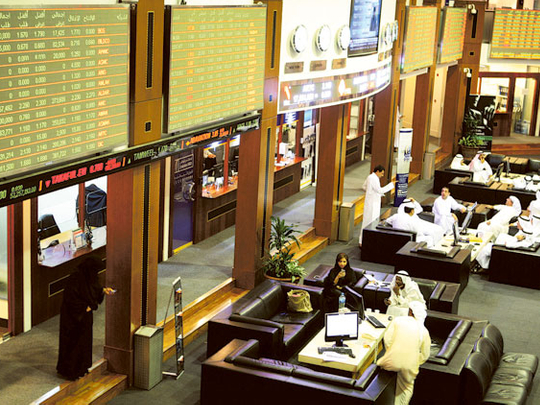
History may or may not be bunk when it comes to markets and economics, and nobody can ever be sure.
Dubai’s record — of soaring aspiration manifestly realised, then downturn and debt renegotiation, and the almost phoenix-like phenomenon of reclaiming the spotlight — seems distinctly its own.
Perhaps that means the stock market as well may find its own niche of identity and impulses. The DFM index has blazed a trail this year, up almost 50 per cent, albeit from a relatively lower base than those of regional counterparts.
Generally speaking, though, what is certain about history is that it can be selectively cited to illustrate a theory that proponents want to be turned into practice. Since the global financial crisis, budget and growth debates aside, we’ve had some very serious experimentation going on in policymaking in the leading economies, so unprecedented in scale (viz. quantitative easing, QE) that the past may not be relevant as a guide to either present or future. At that level we are all flying blind, but following essentially abstract thinking.
Last week the accumulated doubts in world stock and bond markets seemed to reach a critical juncture. Dubai’s index eventually ran quite reasonably into profit-taking, while other benchmark bourses, assorted government bonds and especially emerging markets either succumbed to burnout or needed at least to catch breath.
The difficulty in estimating where we are now, and what to believe about collective economic upturn, reminds me that many moons ago the monthly jobs data out of the US, the keynote of the week just passed, used to play very much on my imagination, insofar as I had to commit to views before and after on the movements of the US dollar and global markets, to a banking and affiliated client audience.
What was difficult enough in those days has become arguably even more opaque a generation later, amid a state of such exaggerated separation between market and economic cycles, with underlying fault-lines of debt threatening calamity still.
Employment figures
It used to be that you couldn’t tell whether the employment figures would send the market higher or lower because (a) the same data could in principle elicit opposite reactions in different parts of the Treasury yield curve, and/or (b) the news as it transpired might have been to an unknown extent already discounted. So predictions were indeed made on a wing and a prayer.
In recent years that conundrum has been overlaid by the appearance of the risk-on/risk-off experience — indeed gravitating especially to the dollar and sovereign bonds as safe havens — related to the aggravated sensitivities since the credit crunch.
On top of which today has arisen the guardianship of the markets effectively assumed by central banks, with monetary policy taking the lead. Readers will undoubtedly have noted that traders now perceive positive figures on the economy as negative for the market because the US Federal Reserve, in particular, might resultingly curtail its routine dosages of stimulus, injections on which so much of the world seems indirectly to depend.
So the global situation is perplexing, as too is how to position for investment, with the historic patterns of asset rotation unreliable in the face of what isn’t really a cyclical event but rather a profoundly structural set of dilemmas internationally — dilemmas that unfortunately are being treated by the prominent authorities of the US and Japan mainly as if they are cyclical in nature.
Whatever the numbers, then, good or bad news could both be perceived as bad or good, leaving only the event and reaction themselves to reveal all.
As it happened this time, Friday’s payrolls release, showing 175,000 jobs added in the US last month, fell neatly between two scenarios, strong enough to suggest an economy on track, but weak enough to keep the Fed’s hand on the helpful tiller.
Emerging markets
That sweet spot being found, stocks were buoyed again. But treading that line looks like a high-wire act now, and emerging markets, which promised so much in economic growth and market returns, have dropped off markedly in their reliance on the international portfolio flows now making a beeline home having smelled the honey there. Bonds, meanwhile, are volatile with the heightened uncertainty.
For the UAE’s markets together, within the Gulf’s cocoon of liquidity and revivified business activity, it’s ironic that emerging market status may now be beckoning (if reports of MSCI’s latest, pending annual review are to be believed), as it’s the frontier markets, UAE included, that have been delivering the most to investors in recent times.
Three or four years ago the world economy was in deep trouble, and there’s an argument that global stocks now are not bothered with reality so much as hooked on a monetary dripfeed. Time will tell whether Dubai is really offering an organic alternative to the artificial sweetener saturating the daily trading elsewhere.












